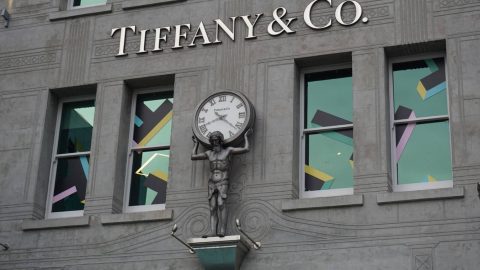Hardly anyone can escape the fascination that the element with the atomic number 79 in the periodic table exudes: the wonderful glow, the exuberant value. But on a more rational front: what is the economic function of gold, and how does it perform socially and environmentally?
What’s the long-term rate of return of gold?
Due to the gold coverage that used to be commonplace for currencies for a long time – especially for the US dollar – the gold price used to experience only little volatility. For the first 30 years of the 20th century, it was hovering around USD 200 per ounce.
The Bretton Woods regime set an ounce of gold at USD 35 (N.B. Bretton Woods implemented gold as lead currency and fixed exchange rates relative to other currencies). Accordingly, the gold price chart was more or less flat – until 1973. At that point, the divergent economic development of the various economies made a continued pegging of the exchange rates untenable. This resulted in a weak US dollar and the increase of the gold price above USD 100 in the same year.
In 1980, the gold price recorded a new high of USD 850, driven by political crises, among other things (Iran, Afghanistan). In the following years, however, the price would decline to the earlier level of 1979. The financial and economic crisis set off another upward trend.
On 6 September 2011, gold set its all-time-high at USD 1,920.49 per ounce at the New York NYMEX. This was followed by a correction to currently (December 2019) close to USD 1,500.
How successful would an investment in gold have been over the years? The average return over the past ten years (December 2009 to December 2019) has been 2.7% (in USD).
Over the past 50 years, gold has earned the investor an annual 7.8%. And Great-Granddad’s gold coin from 1919 has yielded close to 4.4% p.a. By comparison, an investment in equities (S&P 500) has yielded almost 11% p.a. in the past ten years and an annual 6% over the past 100 years.
However, there have also been periods where gold was superior to equities and saved the investor from significant losses. This was particularly true for times of crises and hyperinflation. Gold as material asset protects against inflation (as do equities, by the way).
What are the drivers of the gold price?
The direct determinant of any good is the relationship of supply and demand. These, in turn, are driven by fundamental forces, overlaid with psychological “white noise”.
In case of gold, this is complemented by a strongly political element that may come in the form of historically existing purchase and selling restrictions (especially for private individuals), price fixing by central banks or others. For gold, the fundamental value drivers seem to be of subordinated relevance, which does not come as a surprise, given that the utility value of gold is of a secondary nature.
What are the environmental consequences of gold production?
Throughout human history, an estimated 190,000 tonnes of gold have been produced, and about 3,000 tonnes are added on top of that every year. Important large-scale production methods are the amalgam process that uses mercury and cyanide extraction.
Both processes are highly problematic from an environmental point of view and poison soil, water bodies, and living creatures, and they often do so in particularly sensitive habitats.
The amount of rock that has to be moved is enormous and generally increases due to the decreasing gold content in the newly developed deposits from one mine to the next. Sometimes the gold content is as low as one gram per tonne of rock. This means an average wedding ring requires 10 to 20 tonnes (!) of rock to be moved. Gold production is energy-intensive and accordingly detrimental to the climate. Much of the damage only emerges after the mine has been closed down (e.g. acid mine damage). The responsibilities in this context are unclear.
On the upside, gold has a high recycling ratio of close to 100%. By the way: the gold required for technology and medicine could be covered by recycling without a problem (about 30% of global supply). No primary gold would have to be produced.
What are the social effects of gold?
The increasing exhaustion of the depositories in the first world has led to the rising significance of gold production in Latin America, Africa, Asia, and the former Soviet Union. More than 40,000 tonnes of gold have so far been mined from the world’s biggest depository, discovered in 1886, i.e. the Witwatersrand goldfield.
The currently most important gold-producing countries are China, Russia, Australia, the USA, Canada, Indonesia, Peru, South Africa, Mexico, and Ghana. Due to the political and legal framework in many of these countries, the social balance sheet of gold production is suboptimal: infringement with worker and human rights, conflicts with indigenous people, corruption, health hazards, and many casualties in the mines.
Whole swaths of land in developing and emerging countries are paying a high environmental and social price, while the majority of the economic value-added benefits international mining companies: Barrick Gold, Goldcorp und Kinross Gold from Canada, Newmont Mining from the USA, and AngloGold Ashanti from South Africa are among the leading quoted gold miners.
In addition to the negative effects of mining and smelting – which are also valid for other metals to some degree – gold also has to grapple with its character of being considered a luxury good. Jewellery and gold items account for half of the gold supply, an estimated third is held by investors, and a tenth is held by central banks.
Only a small part is used in electronics and medicine on the basis of its actual utility value. Other metals such as silver or zinc are regraded from a more rational perspective, are used purposefully, and play an important role in a future scenario that builds on renewable energy and e-mobility.
Can gold be a sustainable investment?
The sustainability research agency rfu was commissioned to find the most sustainable gold mining shares in 2012. The base universe consisted of about 200 companies, but only a handful of justifiable titles ended up in the sustainable universe.
Some of their traits are that they work without the use of cyanide and only operate in regions with low social risk such as Canada or Scandinavia. In 2018, rfu developed a sustainability rating process for commodities. Of the nine analysed industrial and precious metals, gold achieved the worst environmental and social performance.
On a rating scale of A+ to C-, the precious metal was positioned at C+, which put it deeply into negative terrain. A truly sustainable investment in gold is therefore practically almost impossible.
But if you do not want to do away with gold completely when it comes to the marriage proposal or the Christmas present, can rely on fair trade gold. Fair trade gold was produced from mines that are certified with regard to environmental and work standards and receives a premium of USD 2,000 per kg on top of the market price in support of the implementation of local projects.
Legal note:
Prognoses are no reliable indicator for future performance.
Legal disclaimer
This document is an advertisement. Unless indicated otherwise, source: Erste Asset Management GmbH. The language of communication of the sales offices is German and the languages of communication of the Management Company also include English.
The prospectus for UCITS funds (including any amendments) is prepared and published in accordance with the provisions of the InvFG 2011 as amended. Information for Investors pursuant to § 21 AIFMG is prepared for the alternative investment funds (AIF) administered by Erste Asset Management GmbH pursuant to the provisions of the AIFMG in conjunction with the InvFG 2011.
The currently valid versions of the prospectus, the Information for Investors pursuant to § 21 AIFMG, and the key information document can be found on the website www.erste-am.com under “Mandatory publications” and can be obtained free of charge by interested investors at the offices of the Management Company and at the offices of the depositary bank. The exact date of the most recent publication of the prospectus, the languages in which the key information document is available, and any other locations where the documents can be obtained are indicated on the website www.erste-am.com. A summary of the investor rights is available in German and English on the website www.erste-am.com/investor-rights and can also be obtained from the Management Company.
The Management Company can decide to suspend the provisions it has taken for the sale of unit certificates in other countries in accordance with the regulatory requirements.
Note: You are about to purchase a product that may be difficult to understand. We recommend that you read the indicated fund documents before making an investment decision. In addition to the locations listed above, you can obtain these documents free of charge at the offices of the referring Sparkassen bank and the offices of Erste Bank der oesterreichischen Sparkassen AG. You can also access these documents electronically at www.erste-am.com.
N.B.: The performance scenarios listed in the key information document are based on a calculation method that is specified in an EU regulation. The future market development cannot be accurately predicted. The depicted performance scenarios merely present potential earnings, but are based on the earnings in the recent past. The actual earnings may be lower than indicated. Our analyses and conclusions are general in nature and do not take into account the individual characteristics of our investors in terms of earnings, taxation, experience and knowledge, investment objective, financial position, capacity for loss, and risk tolerance.
Please note: Past performance is not a reliable indicator of the future performance of a fund. Investments in securities entail risks in addition to the opportunities presented here. The value of units and their earnings can rise and fall. Changes in exchange rates can also have a positive or negative effect on the value of an investment. For this reason, you may receive less than your originally invested amount when you redeem your units. Persons who are interested in purchasing units in investment funds are advised to read the current fund prospectus(es) and the Information for Investors pursuant to § 21 AIFMG, especially the risk notices they contain, before making an investment decision. If the fund currency is different than the investor’s home currency, changes in the relevant exchange rate can positively or negatively influence the value of the investment and the amount of the costs associated with the fund in the home currency.
We are not permitted to directly or indirectly offer, sell, transfer, or deliver this financial product to natural or legal persons whose place of residence or domicile is located in a country where this is legally prohibited. In this case, we may not provide any product information, either.
Please consult the corresponding information in the fund prospectus and the Information for Investors pursuant to § 21 AIFMG for restrictions on the sale of the fund to American or Russian citizens.
It is expressly noted that this communication does not provide any investment recommendations, but only expresses our current market assessment. Thus, this communication is not a substitute for investment advice, does not take into account the legal regulations aimed at promoting the independence of financial analyses, and is not subject to a prohibition on trading following the distribution of financial analyses.
This document does not represent a sales activity of the Management Company and therefore may not be construed as an offer for the purchase or sale of financial or investment instruments.
Erste Asset Management GmbH is affiliated with the referring Sparkassen banks and Erste Bank.
Please also read the “Information about us and our securities services” published by your bank.
Subject to misprints and errors.



